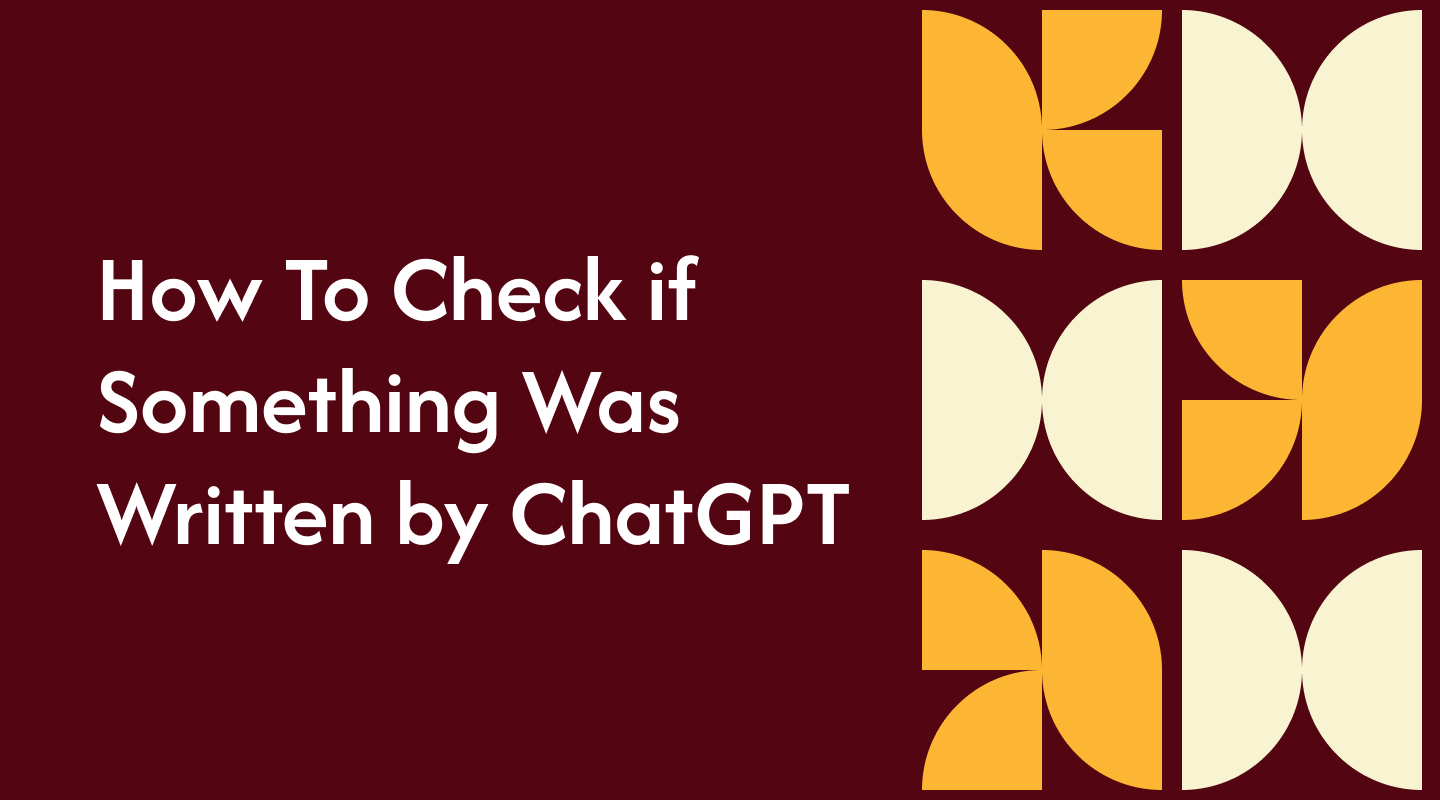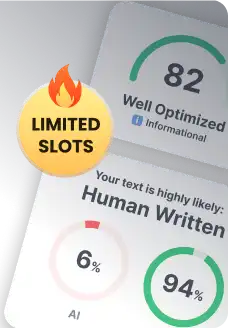Ever wondered if a robot wrote that catchy phrase or clever article? ChatGPT crafts words with a blend of logic and creativity, but there’s a twist. While AI-generated text flows smoothly, it can lack depth or human quirks. Spotting it means knowing the signs: repetitive phrases, uniform tone, and maybe a touch of perfect grammar. Dive into our guide to learn the tricks of the trade. Discover cool tools that sniff out AI handiwork. Identifying AI writing ain’t foolproof, but it’s a skill worth having.
Key Takeaways
- You can also identify AI-generated text by recognizing repeating patterns. Watch for echoes, pedantry, and the lack of personal narrative.
- Be on the lookout for difficulties in AI text detection. AI models have become far more sophisticated, and they now better emulate human writing styles.
- It’s essential that educators stay on top of these evolving AI technologies. By doing so, they can help oversee and direct student engagement with AI tools.
Characteristics of AI Text
Knowing how to identify AI text, such as something penned by ChatGPT, is a useful skill. It starts with recognizing some of those common kinds of characteristics that distinguish AI writing from the writing that we produce.
1. Common Patterns in AI Writing
AI writing often swings between two extremes: overly simple or excessively complex. Sentences may be either too brief and plain or filled with long phrases and complicated vocabulary. This imbalance occurs because AI tries to mimic human writing but struggles to find a middle ground.
AI also tends to overuse transitional phrases, such as “in addition” or “moreover.” These can make the text feel repetitive and formulaic as if the same structure is repeated throughout. Additionally, AI often covers themes designed to engage broad audiences, such as technology trends, popular science, and productivity tips.
2. Repeated Phrases and Structures
AI-generated text sometimes repeats phrases or sentence structures, leading to redundancy. This lack of variation in vocabulary makes the writing feel repetitive. For example, the word “the” may be used excessively.
AI also favors a clean, polished tone, which, while clear, can feel overly formal or sterile. It may use parentheses or brackets more often than necessary, creating awkward pauses in the flow.
3. Lack of Personal Insight
AI often lacks personal insight, failing to include anecdotes or opinions based on personal experience. The writing tends to be detached, missing the emotional depth and subjective perspectives that characterize human writing.
AI’s tone can be overly formal or “boilerplate,” offering generic responses rather than personalized ones. Additionally, AI typically uses American English spelling, even when British English would be more appropriate.
Identifying ChatGPT Text
1. Key Indicators of AI Writing
When identifying ChatGPT-generated text, certain patterns are noticeable. AI content often has an overly formal tone in contexts where it should be more casual. Sentence structures can be unnecessarily complex, making the writing seem overly sophisticated. These attempts to mimic complex human writing may feel unnatural.
Another sign is the coherence and logical flow of arguments. AI can also hallucinate or make up facts, which can show up as inconsistencies and logical gaps in the writing. This lack of factual accuracy and logical progression can be a tell-tale sign of AI authorship. Here’s a quick list of things to check:
Want to try SurgeGraph for free?

Generate 20 documents

SEO tools (Auto Optimizer, Internal Linking, and more)

No credit card required
- The formal tone in informal contexts
- Overly complex sentence structures
- Repeated use of specific nouns
- Logical inconsistencies and made-up facts
2. Signs of ChatGPT Output
ChatGPT has its quirks. It might use particular phrases or structures that come up again and again in its text. Those may include using fillers. If there aren’t clear instructions, people just resort to boring, generic statements to fill out paragraphs. Check for tone and style consistency. If the text feels unnaturally even, it may be AI. Here are some markers to look for:
- Consistent tone and style throughout
- Commonly used phrases
- Use of fillers
3. Automated Content Detection Methods
With technology on your side, identifying AI text doesn’t need to be difficult. AI detectors like SurgeGraph and GPTZero look at text for signs that are characteristic of AI. However, false positives exist. It’s a good practice to verify results with other tools to ensure they are accurate.
4. Manual Text Analysis Techniques
If you prefer a hands-on approach, manual text analysis is a great skill to develop. This involves systematically looking through text for AI aspects.
Now, let’s look at tone and complexity. After that, we’ll search for any factual errors or odd wording that may suggest AI involvement.
Here’s a step-by-step guide:
- Evaluate tone and style
- Check sentence complexity
- Identify factual inconsistencies
- Look for typical AI nouns and fillers
Challenges in Detecting AI Text
The hardest challenge is figuring out whether the text was written by ChatGPT or any AI. It’s like chasing a chameleon through a forest; AI-generated content can be vague and open to interpretation. That ambiguity causes misunderstandings. Imagine reading a story that feels off, but you can’t quite put your finger on what’s missing.
AI text can blend in seamlessly with human writing. This makes it difficult to find mistakes or determine authorship. AI is on a fast track, always changing. New versions of AI pop up all the time, making it difficult for our tools to keep up.
Just when you think you have AI text detection mastered, a new model surprises you with an even better trick. It leaves your old detection methods in the dust almost immediately!
Even when AI text makes its move into human territory by making mistakes, it still throws us off. These hiccups in AI writing mimic human slips, making it all the more difficult to distinguish AI from a person.
Limitations in Detection Accuracy
Detection tools don’t 100% work all the time. Imagine they are nets with holes—some things fall through. These tools may overlook AI text or incorrectly flag human writing. The way someone writes—short sentences, long-winded descriptions, or using fancy words—can trip up detectors.
Want to try SurgeGraph for free?

Generate 20 documents

SEO tools (Auto Optimizer, Internal Linking, and more)

No credit card required
Visualize searching for a specific fish in a pond where each fish stands out. That’s how different writing styles can appear to detectors.
- AI detectors may flag a text as AI-written because of its style.
- They can be fooled by even one instance of AI writing.
- Even a minuscule score can be a false alarm.
- Detectors might be biased against certain text types.
- AI articles are often misclassified.
Overcoming False Positives and Negatives
To avoid false positives — when human writing is stamped as AI — we have to combine human discernment and tech tools. It’s like using both a map and a compass to find your way. One thing you do to improve reliability is update the algorithms, so they learn and adapt. Imagine fine-tuning a musical instrument to hit the right notes.
- Cross-reference the results of AI detectors with the analysis of a human to ensure their correctness.
- Continuously refine detection tools to match evolving writing styles.
- Mix human intuition and AI tools for a balanced strategy.
Frequently Asked Questions
What are the common characteristics of AI-generated text?
AI-generated text contains repetitive phrases, no unique personal anecdotes, and a neutral tone. It could also have correct, but lifeless, grammar.
How can I identify if a text was written by ChatGPT?
Seek out structural patterns, such as formal sentence construction and lack of personal opinion. AI text typically sticks to facts and doesn’t make subjective statements.
Why is it important for educators to know how to detect AI text?
Educators must secure academic integrity. Being able to identify AI writing ensures student work remains original and promotes true skill acquisition.
What are the best practices for educators to identify AI text?
Educators should employ AI detection tools, look for plagiarism, and encourage students to offer personal reflections on their work. Setting clear guidelines can also help.
Can AI detection tools identify all AI-generated content?
Not all the time. While these tools are helpful, they aren’t foolproof. With such a rapid pace of improvement in AI, it’s difficult to catch all AI-generated content correctly.





